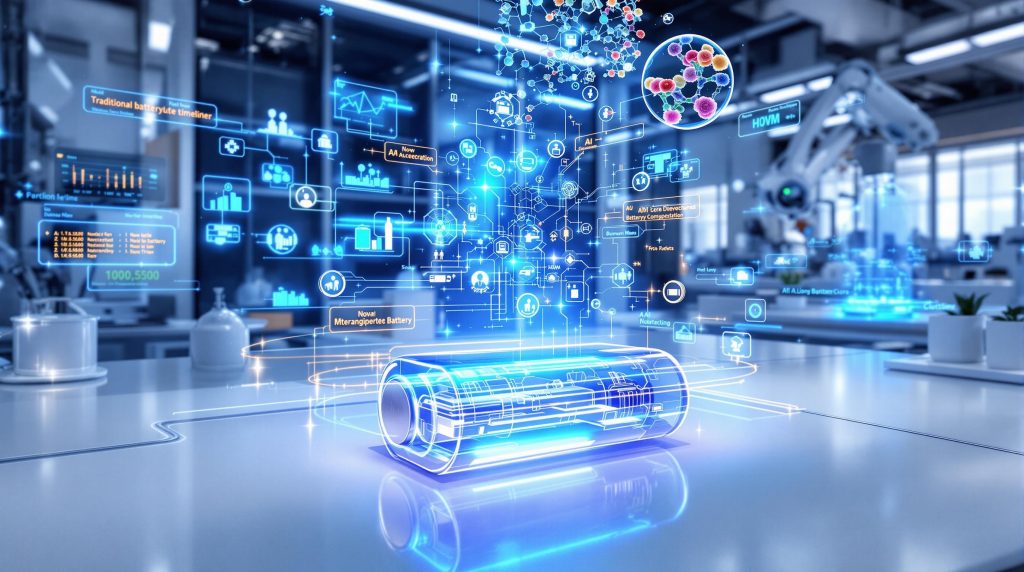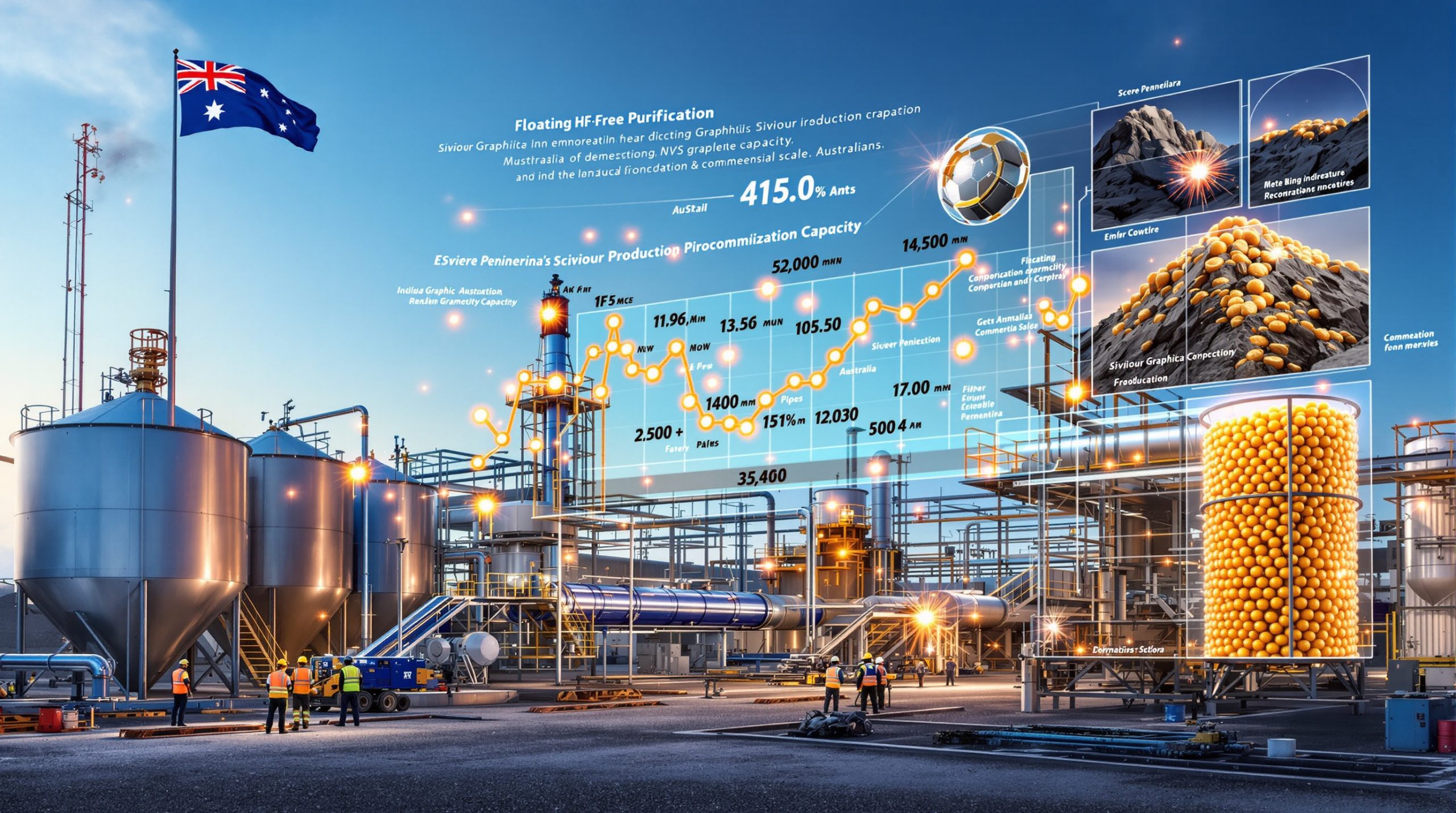How is AI Revolutionizing Battery Research and Development?
The intersection of artificial intelligence and battery technology represents one of the most promising frontiers in energy storage development. Traditional battery research methods—characterized by time-consuming material discovery, resource-intensive testing, and lengthy development cycles—are being rapidly transformed through AI-powered approaches that are changing not just how quickly we develop batteries, but the fundamental ways researchers approach the challenge.
The Evolution of Battery Research in the AI Era
Battery development has historically followed a methodical but slow path. Researchers would test countless material combinations through labor-intensive lab work, requiring significant resources and time—often stretching into months or years—before identifying viable improvements. This painstaking process has been a major bottleneck in advancing energy storage technology.
AI is fundamentally reshaping this landscape by compressing timeframes dramatically. According to the University of Bayreuth's groundbreaking research, processes that traditionally took "weeks or even months" can now be completed in "just a few hours"—potentially representing a 100x acceleration in certain research phases.
The transformation extends beyond mere speed:
- Material discovery acceleration: AI systems can analyze millions of potential material combinations virtually
- Computational pre-screening: Before physical testing begins, AI can predict which materials show the most promise
- Collaborative frameworks: Researchers are developing new ways for humans and AI to work together
- Democratized capabilities: Advanced research tools are becoming more accessible to smaller labs and institutions
The result is a scientific paradigm shift where the rate of innovation is no longer constrained primarily by physical experimentation but increasingly enhanced by computational power and machine learning capabilities.
What Makes AI-Powered Battery Research Different?
Multi-Agent Systems: The New Research Partners
Perhaps the most revolutionary aspect of AI in battery research is the emergence of specialized multi-agent systems—collaborative AI frameworks where different algorithmic "agents" perform complementary roles in the research process.
The University of Bayreuth, in collaboration with Hong Kong University of Science and Technology, has pioneered a multi-agent approach that transforms AI from "a passive tool for data analysis into an active, creative partner," according to Dr. Matthew J. Robson of Hong Kong University of Science and Technology.
Their system features specialized AI agents fulfilling distinct research functions:
- Literature analysis agents that process thousands of research papers, extracting relevant information
- Expert-knowledge agents that apply domain-specific insights to evaluate potential solutions
- Debate simulation frameworks that generate novel hypotheses through simulated scientific discourse
Prof. Dr. Francesco Ciucci, Chair of Electrode Design for Electrochemical Energy Storage at the Bavarian Centre for Battery Technology, explains: "Our new multi-agent system acts as a creative scientific partner with two specialised agents that analyse relevant literature. Through a subsequent simulation of a scientific debate, the two agents combine ideas from their extensive training data and the literature to propose novel electrolyte compositions."
The proof is in the performance. Their research has demonstrated remarkable real-world success metrics:
- Achievement of 4,000+ charge/discharge cycle durability in zinc batteries
- Nearly 20% higher capacity at fast-charging speeds compared to similar electrolytes
- Record-setting performance in the zinc tetrafluoroborate hydrate-based electrolyte class
How AI is Shortening the Battery Development Timeline
The traditional battery development timeline consists of multiple sequential phases: material selection, synthesis, characterization, cell assembly, testing, and iteration. Each phase typically consumes days to weeks, with the entire cycle often extending to months.
AI-accelerated research dramatically compresses this timeline in several ways:
- Parallel processing: Multiple material combinations can be evaluated simultaneously
- Predictive modeling: Performance characteristics can be predicted before physical synthesis
- Targeted experimentation: Laboratory work focuses only on the most promising candidates
- Automated analysis: Test results are evaluated more quickly and comprehensively
This acceleration delivers significant cost-effectiveness improvements:
- Reduced laboratory resource requirements: Fewer raw materials consumed in testing
- Lower experimental waste generation: More targeted experiments mean less waste
- Faster time-to-market potential: Accelerated development cycles can bring innovations to market sooner
While human expertise remains critical, AI serves as a powerful force multiplier, enabling research teams to accomplish more with the same resources and uncover solutions that might otherwise remain undiscovered.
Which Battery Components Benefit Most from AI Research?
Electrolyte Innovation Through Artificial Intelligence
Electrolytes—the medium that enables ion movement between electrodes—have emerged as a particularly fruitful focus for AI-powered battery research. The complex chemical interactions that occur within electrolytes make them ideal candidates for computational optimization.
The University of Bayreuth's research team demonstrated impressive results through AI-driven electrolyte discovery processes that focused on:
- Novel composition identification: Finding unique combinations of materials that traditional methods might overlook
- Environmentally friendly material prioritization: Focusing on sustainable components
- Cost-effective alternative development: Identifying materials that reduce overall battery costs
Their work specifically targeted zinc-ion batteries, where they achieved remarkable performance improvements:
- Enhanced charging speed capabilities: Setting new benchmarks for the electrolyte class
- Extended cycle life: Demonstrating over 4,000 charge-discharge cycles
- Capacity retention optimization: Maintaining performance over extended use periods
Their published research in Advanced Materials, titled "Multi-Agent-Network-Based Idea Generator for Zinc-Ion Battery Electrolyte Discovery: A Case Study on Zinc Tetrafluoroborate Hydrate-Based Deep Eutectic Electrolytes," establishes a blueprint for applying AI to electrolyte development that could extend to other battery chemistry systems.
Electrode Design Optimization
Electrode design represents another critical area where AI is driving significant advancements. The performance of any battery depends heavily on electrode characteristics including material composition, structure, and manufacturing processes.
AI applications in electrode material selection focus on:
- Surface morphology optimization: Analyzing how microscopic surface structures affect performance
- Particle size and distribution modeling: Determining optimal particle characteristics
- Interface stability prediction: Identifying combinations that maintain performance over time
These optimizations translate directly to manufacturing process improvements:
- Reduced material waste: More precise formulations minimize excess material use
- Quality control enhancement: AI pattern recognition can identify defects or inconsistencies
- Scalability assessment: Simulations help determine which designs will perform well at production scale
While the research from University of Bayreuth focused primarily on electrolytes, the multi-agent approach they pioneered shows promise for electrode optimization as well, potentially enabling similar acceleration in development timelines.
How Do AI and Human Researchers Collaborate?
The Augmented Research Partnership Model
The most effective battery research doesn't replace human scientists with AI but instead creates augmented research partnerships that leverage the complementary strengths of both:
| Human Researcher Strengths | AI System Strengths |
|---|---|
| Intuitive hypothesis generation | Massive data processing capacity |
| Creative problem-solving | Pattern recognition across disparate sources |
| Experimental design expertise | Rapid iteration and simulation |
| Critical judgment and evaluation | Unbiased consideration of alternatives |
| Domain knowledge integration | Consistent application of analytical methods |
Prof. Dr. Francesco Ciucci emphasizes this collaborative approach: "Combined with validation through laboratory experiments and the critical judgment of researchers, promising AI suggestions could lead to faster solutions to global challenges."
Effective workflow integration strategies include:
- AI generating and prioritizing potential material combinations or designs
- Human researchers selecting candidates for physical testing
- Laboratory validation of promising candidates
- Results feeding back into AI systems for refinement
- Iterative improvement through repeated cycles
This partnership model accelerates research while maintaining scientific rigor and human oversight of the discovery process.
Case Study: University of Bayreuth's Multi-Agent System
The University of Bayreuth's collaboration with Hong Kong University of Science and Technology offers a concrete example of how AI and human researchers can work together effectively.
Their multi-agent system architecture incorporates several key design principles:
- Dual-agent specialization: One agent focuses on broad literature analysis while another provides expert knowledge
- Literature analysis integration: Agents process published research to inform their recommendations
- Scientific debate simulation: The system simulates scientific discourse between agents to generate novel hypotheses
This approach delivered impressive practical outcomes:
- Novel zinc battery electrolyte compositions: The system identified previously unexplored material combinations
- Performance metrics exceeding conventional alternatives: Testing validated the AI-suggested formulations
- Rapid development timeline: The research team compressed discovery phases significantly
Dr. Matthew J. Robson highlights the significance: "The most important thing here is the development of the role of AI in the scientific process. We have designed a blueprint for scientific research that transforms AI from a passive tool for data analysis into an active, creative partner that can generate truly novel and high-quality hypotheses."
What Are the Environmental Implications of AI in Battery Research?
Sustainability Enhancements Through AI
The environmental impact of battery production remains a significant concern, making sustainability improvements a key objective for researchers. AI-driven approaches offer several potential sustainability enhancements:
- Reduced experimental waste: By identifying promising candidates computationally before physical testing, researchers can minimize material consumption and waste generation
- Lower energy consumption: Computational screening requires significantly less energy than equivalent physical testing
- Optimized material utilization: AI can help identify formulations that use materials more efficiently
Additionally, AI systems can be specifically directed toward environmentally friendly material discovery:
- Identifying non-toxic alternatives to hazardous materials
- Prioritizing abundant, renewable resources over scarce ones
- Developing formulations with reduced environmental impact throughout their lifecycle
While quantitative data on these environmental benefits remains limited, the reduction in physical experimentation alone represents a significant potential decrease in research-phase environmental impact.
Circular Economy Contributions
Beyond improving initial production sustainability, AI can contribute to circular economy principles by helping design batteries with end-of-life considerations in mind:
- Recyclability-focused design: Identifying materials and structures that facilitate easier recycling
- Disassembly optimization: Developing designs that allow for more efficient component separation
- Recovery efficiency enhancement: Maximizing the percentage of materials that can be reclaimed
By incorporating these considerations into the initial design phase, AI-assisted research can help address the growing challenge of battery recycling breakthrough as deployment scales globally.
What Technical Challenges Remain in AI-Battery Research Integration?
Data Quality and Availability Issues
Despite promising advances, significant challenges remain in fully integrating AI into battery research. Data quality and availability represent particularly significant hurdles:
- Research database limitations: Much valuable data remains siloed in proprietary databases
- Inconsistent reporting standards: Variations in how researchers report results complicates data integration
- Historical data quality variations: Legacy data may lack the consistency needed for AI training
These challenges necessitate standardization efforts:
- Developing unified terminology across the field
- Establishing consistent measurement protocols
- Creating metadata standards that facilitate data sharing
Progress in these areas will be essential for maximizing AI's potential contribution to battery research.
Validation and Trust Considerations
The necessity of physical validation remains a fundamental constraint in battery development:
- Experimental verification requirements: Computational predictions must still be validated through physical testing
- Scaling challenges: Laboratory-scale success doesn't always translate to production environments
- Long-term performance validation: Battery longevity can only be fully verified through extended testing
Additionally, AI explainability presents unique challenges in scientific contexts:
- Researchers need to understand the reasoning behind AI recommendations
- Scientific reproducibility requires transparency in computational processes
- Complex models may produce useful results without clear explanations for their choices
As Prof. Dr. Francesco Ciucci notes, "critical judgment of researchers" remains essential, highlighting that AI serves as a partner to human expertise rather than a replacement.
How Will AI Transform Battery Manufacturing?
From Research to Production
The impact of AI extends beyond the research laboratory into manufacturing processes. Transitioning AI-discovered materials and designs to production scale involves:
- Laboratory-to-factory transition methodologies: Adapting laboratory processes for industrial implementation
- Process parameter optimization: Fine-tuning manufacturing variables for optimal performance
- Quality control implementation: Ensuring consistency across large production volumes
Digital twin applications represent a particularly promising approach for production-scale implementation:
- Creating virtual representations of physical production systems
- Enabling real-time monitoring and optimization
- Facilitating predictive maintenance to minimize downtime
These approaches can help ensure that breakthroughs achieved in research translate effectively to commercial products.
Economic Impact Projections
The economic implications of AI-accelerated battery development are substantial:
- Development timeline compression: Reducing time-to-market can provide significant competitive advantages
- Material efficiency improvements: Optimizing formulations can reduce raw material costs
- Energy consumption optimization: More efficient production processes lower operational expenses
These factors contribute to enhanced market competitiveness through:
- Faster innovation cycles allowing more rapid adaptation to market needs
- Quality improvements resulting from more precise control of manufacturing processes
- Customization capabilities enabling products tailored to specific applications
While precise economic impact remains difficult to quantify, the potential for cost reduction combined with performance improvements suggests significant long-term value.
What's Next for AI in Battery Technology?
Emerging Research Directions
The application of AI to battery research continues to evolve rapidly. Several emerging directions show particular promise:
- Beyond lithium-ion technologies: Applying AI approaches to alternative chemistries including sodium-ion, zinc-ion, and other novel battery types
- Solid-state battery development: Accelerating the discovery of solid electrolytes that overcome safety and energy density limitations
- Novel energy storage paradigms: Exploring entirely new approaches to energy storage beyond traditional battery architectures
The potential integration of quantum computing represents another frontier:
- Enabling molecular-level simulations with unprecedented accuracy
- Modeling complex electrochemical systems more comprehensively
- Applying computational power orders of magnitude beyond current capabilities
These advances could further accelerate the already impressive pace of AI and battery research innovation.
Future Collaborative Frameworks
The evolution of collaboration between AI systems and human researchers continues to develop:
- Open-source AI research tools: Democratizing access to advanced capabilities
- Community-driven improvement cycles: Collaborative refinement of algorithms and approaches
- Knowledge sharing platforms: Facilitating exchange of data and methodologies
Cross-disciplinary integration offers additional opportunities:
- Combining materials science expertise with computer science capabilities
- Integrating chemistry insights with machine learning approaches
- Bridging engineering knowledge and data science methodologies
Furthermore, as the battery metals landscape evolves, AI will play a crucial role in optimizing material selection and usage. Research into pure lithium batteries and advancements in direct lithium extraction techniques are being enhanced through AI applications, creating more sustainable and efficient energy storage solutions.
FAQ: AI and Battery Research
Q: How much faster is AI-powered battery research compared to traditional methods?
A: According to research from the University of Bayreuth, AI-powered approaches can reduce initial discovery phases from weeks or months to just a few hours, representing potentially 100x acceleration in certain research stages. However, physical testing and validation still require significant time.
Q: Can AI completely replace laboratory testing in battery development?
A: No, physical testing remains essential for validation. AI serves as a powerful complementary tool that identifies promising candidates and reduces unnecessary experimentation, but real-world performance verification is still required. As Prof. Dr. Francesco Ciucci notes, the "critical judgment of researchers" remains crucial to the process.
Q: What types of batteries have benefited most from AI research so far?
A: While lithium-ion batteries have seen significant AI research attention, recent breakthroughs have occurred in zinc-ion batteries, with the University of Bayreuth demonstrating exceptional performance improvements in zinc tetrafluoroborate hydrate-based electrolytes, achieving over 4,000 charge/discharge cycles and nearly 20% capacity improvements at fast-charging speeds.
Q: How accessible is AI-powered battery research technology?
A: Accessibility is increasing as more open-source tools become available, though significant expertise in both battery chemistry and data science is still required. Research institutions and larger companies currently have advantages in implementation, but democratization efforts continue to expand access.
Q: What role do human researchers play in AI-powered battery development?
A: Human researchers remain central to the process, providing critical judgment, experimental design expertise, and validation capabilities. Dr. Matthew J. Robson emphasizes that AI serves as "an active, creative partner," complementing rather than replacing human expertise. The most effective approach combines AI's computational power with human scientific intuition and experience.
Regular battery raw materials updates help researchers understand market conditions that influence material selection and availability, further informing AI-driven optimization strategies.
Disclaimer: Battery technology development involves complex scientific and engineering challenges. While AI is accelerating research timelines, practical implementation of new battery technologies still requires rigorous testing and validation. Performance metrics mentioned in this article reflect laboratory testing under specific conditions and may not translate directly to real-world applications.
Want to Discover the Next Major ASX Mining Opportunity?
Stay ahead of the market with Discovery Alert's proprietary Discovery IQ model, delivering real-time notifications when significant mineral discoveries are announced on the ASX. Visit our discoveries page to understand how major mineral discoveries have historically generated substantial returns for early investors.




